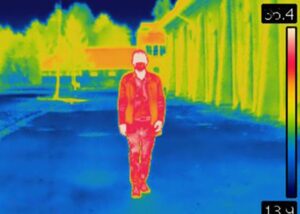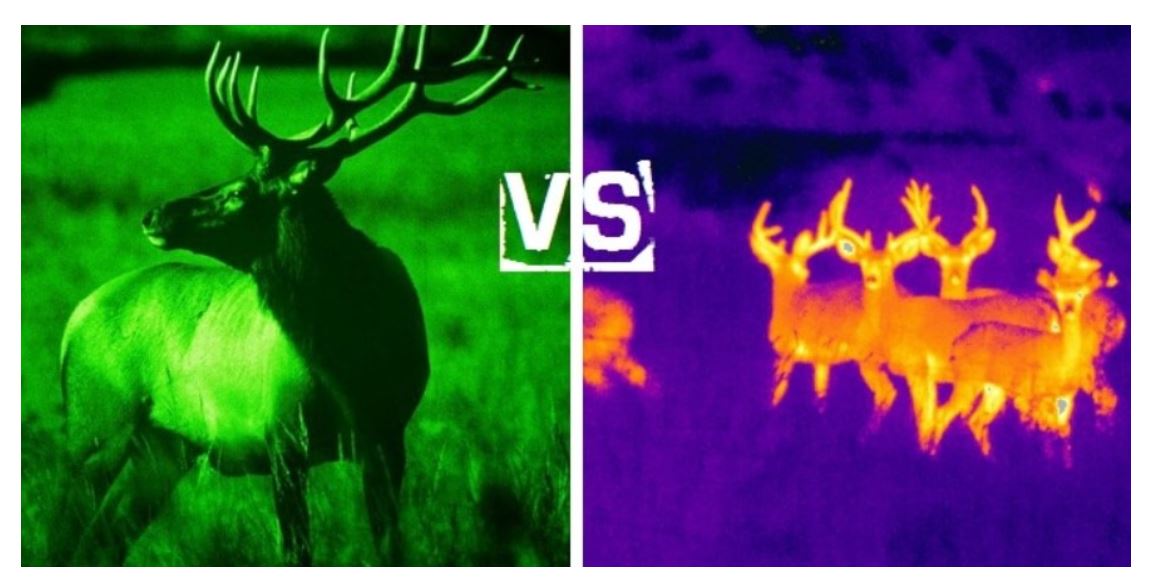Thermal vs night vision rifle scopes
Making the choice between a thermal and a night vision rifle scope is always difficult for many shooters, both new and experienced.
To understand which is the best option for you, however, you must first understand their differences and where each one excels.
Night vision Rifle Scope

This is a technology that dates back to the 20th century during World War II. This technology played a great role in the military because it allowed viewing targets in the dark.
The earlier night vision technology, however, was unrefined and more delicate because it relied on intensifier tubes, which are physical components, to amplify the ambient light surrounding an object to make it visible in the dark.
To date, night vision rifle scopes have gone through different levels of advancements and we now even have cheaper versions that use digital technology that makes use of a CMOS sensor to electronically enhance images in the dark.
Thermal Rifle Scope

This technology emerged in the late 20th century to be used by both the military and in industrial applications. The thermal scope doesn’t amplify the lighting surrounding an object, like night vision, but rather detects the infrared radiation emitted by the particular object.
Yes, every object out there emits infrared radiation even a block of ice. The difference is that different objects emit different levels of radiation and the different levels are depicted using different colors on the thermal image.
The thermal image doesn’t display an actual image of the target but rather uses various colors to depict the target in what is known as a thermogram.
Differences Between Night Vision Vs Thermal Rifle Scope
Here is a summarized form of the differences between the two types of rifle scopes.
| Thermal Rifle Scope | Night Vision Rifle Scope | |
|
|
Detects the thermal radiation emitted by an object | Amplifies the ambient light surrounding an object |
|
|
Can detect targets hidden behind obstructions | Only detects unhidden targets |
|
|
Displays a thermogram which is a color depiction of the targets | Displays the actual image of the target |
|
|
Typically have a longer range than night vision | The range depends on the ambient lighting |
|
|
More expensive than night vision rifle scopes | Less expensive especially the digital variants |
|
|
Work both during the day and night and in harsh weather conditions | Only the digital variants can be used during the day. |
|
|
Can detect targets in pitch-dark conditions | Only works in dim lighting conditions. |
Uses of Night Vision and Thermal Rifle Scopes
Despite their differences the night vision and thermal rifle scopes have a number of uses that are quite similar in nature. The uses include;
Surveillance
Both night vision and thermal imaging rifle scopes can be used for surveillance during the nighttime. This is because both are able to view objects under low-light conditions.
Hunting
This is the most popular use of both night vision and thermal rifle scopes. Most hunting happens at dawn and during twilight hours when most animals come out. This renders a normal rifle scope insufficient under such conditions, therefore hunters make use of either the night vision or thermal scope.
The thermal scope however bears an advantage over night vision because it can be used on days when it’s completely dark outside.
Military and Tactical
Night vision and thermal rifle scopes are utilized by security forces to operate in the dark. Even the most advanced military goggles and scopes utilize either of the two technologies.
Pest control
Most pests operate in the dark therefore night vision and thermal scopes come in handy when hunting down these harmful varmints.
Conclusion
Despite their differences, it’s clear that both the night vision and thermal rifle scopes have changed how the rifle scope can be used under nighttime conditions. Before the emergence of both of these devices shooting activity in the dark was limited.
The choice between either the night vision or the thermal scope will depend on the requirements of the shooters. A shooter should go through the summary of the differences present in this article and find out what really matters to them and, most importantly, whether their budget fits a thermal rifle scope, which happens to be more expensive than the night vision alternative.
Related

